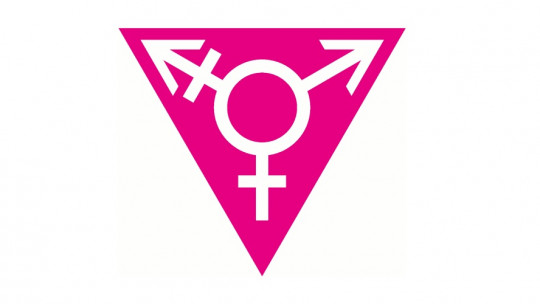The myth of Cassandra has been used as a metaphor for various social and psychological phenomena, referring mainly to the silencing or disbelief of aspects traditionally related to the feminine by dominant figures or instances. These invisible feminine elements are, among others, intuition, imagination or creativity.
This overshadowing of qualities considered feminine can be called the “Cassandra complex.”
Cassandra: the Trojan princess
The myth, which was immortalized in Homer’s Iliad, tells us that Apollo, god of reason, lucidity and moderation, fascinated by Cassandra’s beauty, promised her the gift of prophecy in exchange for her becoming his lover. Cassandra, daughter of the kings of Troy, accepted the gift, but rejected Apollo who, offended, curses her, making her predictions, although accurate, not believed or taken into account.
Unable to prevent or transform the events she foresaw, including the fall of Troy and her own death, the gift became a continuous source of pain and frustration for Cassandra, and she was also excluded and stigmatized by her visions.
The myth of Cassandra tells us about the dark aspect of Apollo, that is, when the rationality that characterizes patriarchy forgets its matriarchal roots and arrogantly reveals itself through misogyny, equating the feminine with the lacking, the weak and what is susceptible to being dominated, exploited and violated.
The myth makes visible the need for linear, logical, analytical, quantitative and penetrating thinking, which provides pragmatic solutions and is usually related to the masculine, to be complemented with the so-called thinking of the heart, with receptivity, with the qualitative, with creativity, with synthesis and acceptance, traditionally related to the feminine.
The disqualification of the imaginary in modernity
Within the context of scientific materialism, framed in the Newtonian and Cartesian paradigm, different aspects reluctant to subscribe to instrumental and productive logic such as intuition, imagination and the entire field of the non-visible (traditionally related to the feminine) began to be considered erroneous, dark, childish, superstitious and with no legitimacy to provide valid knowledge about humanity.
The Myth of Cassandra represents the tragedy and imbalance that comes with neglect and contempt for the non-rational sphere. subjective and ineffable of our nature.
Within science itself, quantum physics, whose object of study is the smallest particles of which the universe is composed, that is, the infinitely small, the non-visible, has invalidated the absolute concreteness that was presupposed for matter. from scientific materialism, revealing a mysterious, paradoxical and irrational aspect that has strong similarities and correspondences with the nature of the psyche.
For example, it demolishes the pretensions of objectivity, evidencing the affectation of the observer on what is observed when experimenting with quantum proportions.
The discredit and expulsion of the soul in the contemporary world
Cassandra was confined and expelled from collective life because her words were uncomfortable for the authorities, for the dominant thought.
The popular expression “it is only psychological” reflects the disdain towards the emotional and subjective. in clear subordination to what is considered objective and physical.
The discredit and confinement of the soul alludes to the process of dehumanization and disharmony that is denounced from different instances, generated by the excess of technification, rationalization and instrumentalization.
It refers to the rigid bureaucracy that, instead of facilitating processes, creates obstacles, does not welcome particular cases or the emergence of novel conditions. To medical practices in which economic interests predominate over people’s health, and where the subjectivity of patients fades in diagnoses, protocols and statistics. It also alludes to the medicalization of sadness and social nonconformity.
Other expressions of the confinement of the soul are the cult of appearances, packaging, happiness, youth, speed and growth. All the previous unilateralities that neglect the complexity, depth, ambivalence and cyclical dynamics of the psyche.
The Cassandra complex and the marginalization of the feminine
The curse on Cassandra was that the warnings coming from her visions were not taken into account. that their words were not heard, that their contributions were denied. One of the readings that has been made of the myth of Cassandra is with respect to the exclusion and invisibility of women in patriarchal societies.
Submission and silence were ideal virtues for feminine behavior in ancient Greece and these conceptions and practices have been maintained over time.
There is multiple evidence that despite having been in inferior conditions in access to knowledge, women have historically been present in a relevant way in the political, artistic and scientific spheres. However, her contributions have been made invisible or absorbed by a figure of greater legitimacy within the patriarchal logic, such as her father, brother, husband, or lover.
In this same sense, there are also multiple testimonies of how scientific knowledge has not only advanced from rationality and empiricism but from intuitions, imaginative visions and other aspects related to the non-rational sphere, but just as with women. , These findings are made invisible or taken as simple coincidences.
Invisibility towards women also occurs when they are not taken into account in the media or for activities in which they could perform efficiently, because their age, their figure or their appearance does not adapt to the expectations of a certain male gaze. , disappearing, as well as objects of desire.
The feminine as merchandise and property
Once Troy was defeated, Cassandra was kidnapped and taken as spoils of war. The woman’s body has been and still is treated as a commodity, as an object of pleasure, as an advertising showcase.
The logic of the commodification and objectification of the female body is based on forced prostitution, human trafficking, pressure for a slim figure, the rise of aesthetic operations, and rape as a weapon of war.
This logic is implicit in the mind of the abuser who considers his partner or ex-partner as his property, therefore, with the possibility of using it as he pleases.
The woman who belongs to herself and structural disbelief
In some versions of the myth, Cassandra is given the role of priestess or virgin. These aspects, in that context, symbolize women’s resistance to the subordination and dependence of men, as well as to the logic of domination and power that they personify. Cassandra then represents the woman who belongs to herself and not to her father or husband.
In patriarchal societies, belligerent women, those who say what is not wanted to be heard, those who transgress the canons imposed by men, have tried to silence, marginalize or ridicule them by calling them crazy, witches or “hysterical”.
Nowadays, many women have to face this structural disbelief in various circumstances. For example, when after overcoming multiple obstacles and disadvantages in relation to men, they manage to access spaces of power or recognition beyond those traditionally attributed to women (beauty, care of others, objects of pleasure) and are delegitimized, disqualified or not. taken seriously.
Disbelief is also present when testimonies of sexual abuse or harassment are presented and are often discredited as fantasies or provocations of the woman herself.
Another expression of disbelief is the case of conditions in which it is not possible to find a visible and quantifiable element in the body, such as chronic pain, fibromyalgia or mood disorders. People have to face being questioned about the veracity or intensity of their suffering, or even endure being accused of engaging in manipulative behavior.
Fissure between mind and body: lost animality
In some versions of the myth, Cassandra’s prophetic ability is expressed as the ability to understand the language of animals. In mythology, animals are usually representations of our instincts, the needs of our body and its rhythms, our basic drives.
The myth of Cassandra refers to how the civilizational process, which has elevated rationality and empiricism as dogmas, has opened a gap with our animality, with our innate capacity for self-regulation, with the inherent wisdom of our nature.
Distancing with our animality, with the wisdom of our body, manifests itself as disorientation and dissociation.
Internalized undervaluation
Women are forced to construct their identity in a context where their sources of identification are valued in a pejorative way, giving them connotations of weakness, victimhood, dependence and irrationality. On many occasions, the mother herself becomes the reference point for what women do not want to become. The values associated with men, on the other hand, are highly valued, considering man as entrepreneurial, logical, pragmatic, uncomplicated, objective, independent, strong, brave, powerful.
For Maureen Murdock, the denigration of the feminine increases the chances that many women seek approval under patriarchal values, leaving aside or minimizing other fundamental areas of their personality.
Thus, the invisibility, marginalization, and disregard to which women are exposed are internalized. constituting an internal psychic factor from which negative judgments and evaluations towards oneself emerge.
The woman then identifies with rationality and the pursuit of external goals, constantly seeking approval from the male gaze. Internalized devaluation is established as a feeling of insecurity and worthlessness that can manifest itself as compensation through a constant search to demonstrate how efficient and capable one can become, in many cases under criteria of excessive demands that exceeds the requirements of the context itself.
Psychological changes that are generated
The woman can then be possessed by an obsession with perfection and the need to have control in different areas: work, her own body, relationships, while rejecting or distancing herself from other aspects of herself that have traditionally been been related to the feminine.
She then becomes deaf to the signals of her body and its rhythms; to the possibility of recognizing the excesses or deficiencies that occur. She does not give credibility to the inner feeling that can guide her about relationships or attitudes that need to be abandoned; nor to her voice that promotes her for the deployment of her own vocation, that encourages her to be faithful to her own truth.
The gradual unfolding of the deepest needs of our psyche was called in Jungian psychology as the process of individuation and is considered to become more relevant in the second half of life, when the needs of adaptation to the outside world, vanity and necessity of recognition begin to lose relevance, while the development of our interiority emerges as a priority.
The Cansandras as medial women
Cassandra is named by the chorus as the very unfortunate and very wise, evoking the traditional relationship of wisdom that emerges from suffering and frustration.
For Newman, the process of the evolution of collective consciousness in Western culture has gone from matriarchal unconsciousness with a predominance of the instinctive, animism and the collective, to patriarchal skepticism in which rationality and individuality have prevailed. For Newman, the necessary patriarchal stage is experiencing its decline due to exhaustion.
The spirit of the time then corresponds to the need for a perspective in which the two principles interact harmoniously, which implies an integration of the feminine, reviled and repressed in this last stage.
The Jungian analyst Toni Wolf suggests that there is a type of women with a special sensitivity that makes them serve as mediators between the internal world and the external world. Medial women, as they are called, are absorbed and molded by what seeks to become conscious in a certain era, becoming bearers of new principles and values.
Medial women capture and stage in the conflicts of their own lives, in the pains of their own bodies, what “is in the air”, what the collective conscience does not quite admit: the need to integrate the reviled feminine and repressed.
Through their art, their sufferings, they give light to the collective drama of erotically linking the masculine and feminine aspects, which like a sacred marriage act as complementary opposites without any type of subordination. They consecrate themselves unconsciously, at the service of a new and covert spirit of the time, as the first martyrs did. Their pain becomes a scythe for the superfluous and for the encounter with the most essential and genuine.
The collective consciousness cries out for recognition and integration of the soul, of the feminine, in relationships, in institutions, in the productive model, in instances of power. Participation on equal terms with the qualitative, with the non-visible, cannot be postponed. May the patriarchal conquering, warlike and colonialist logic be nuanced under the integrative and welcoming gaze of the feminine that brings into unquestionable evidence the interdependence of all peoples and the brotherhood that binds us as a species. May it also restore the sacredness and respect that the planet and all the elements of nature deserve.









